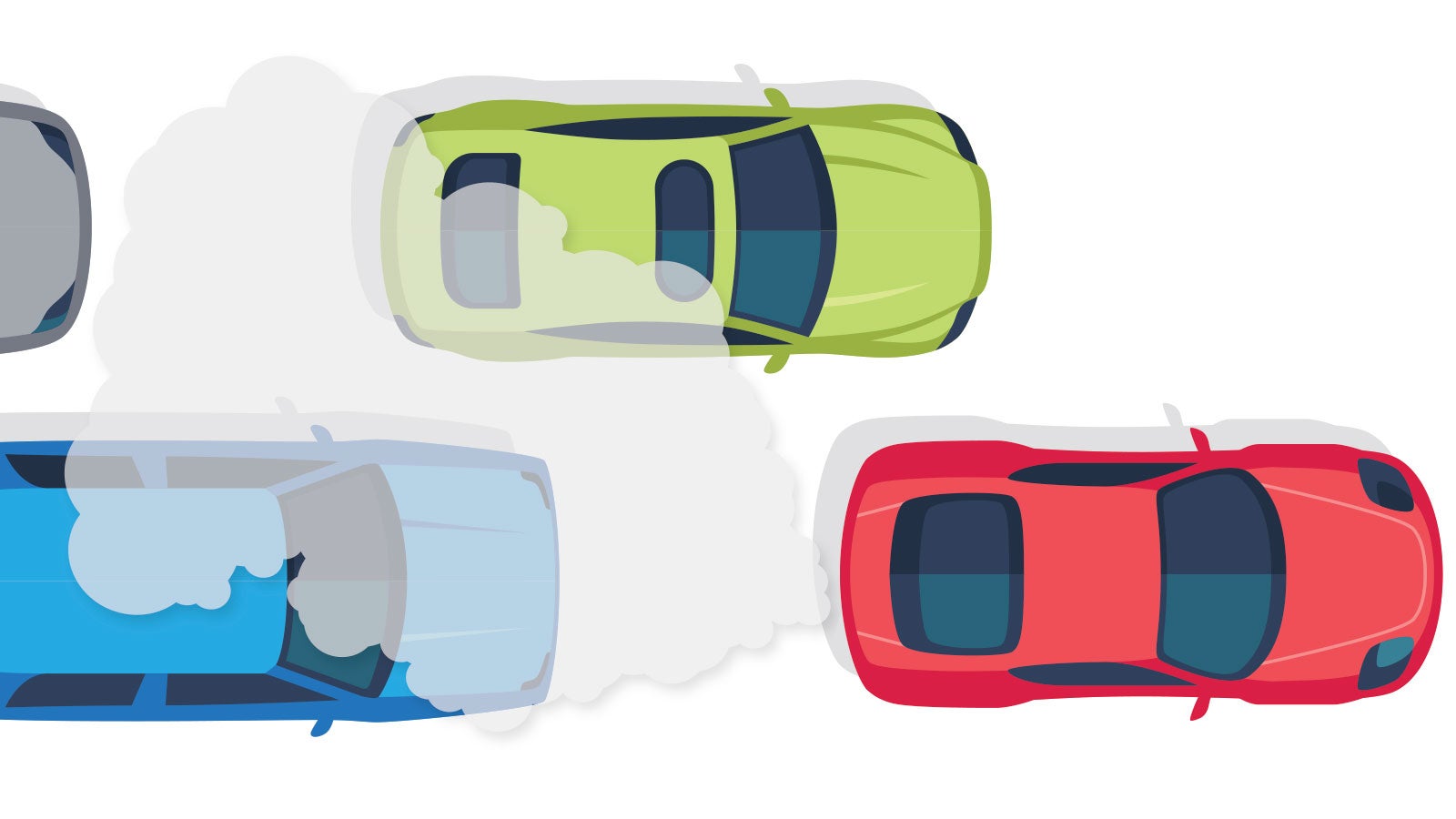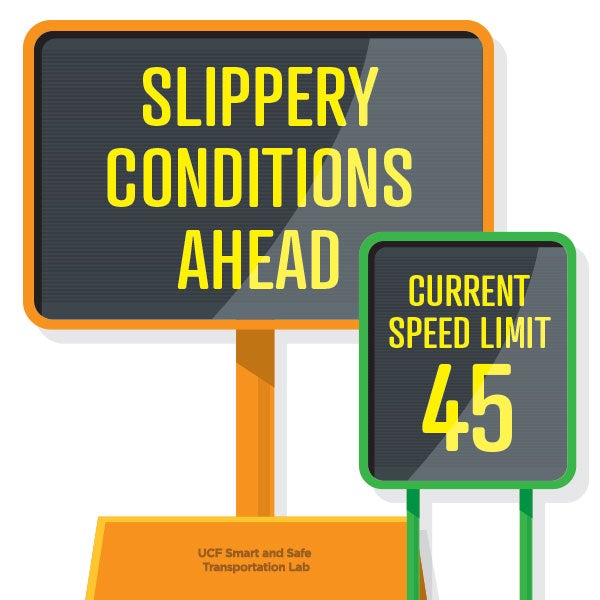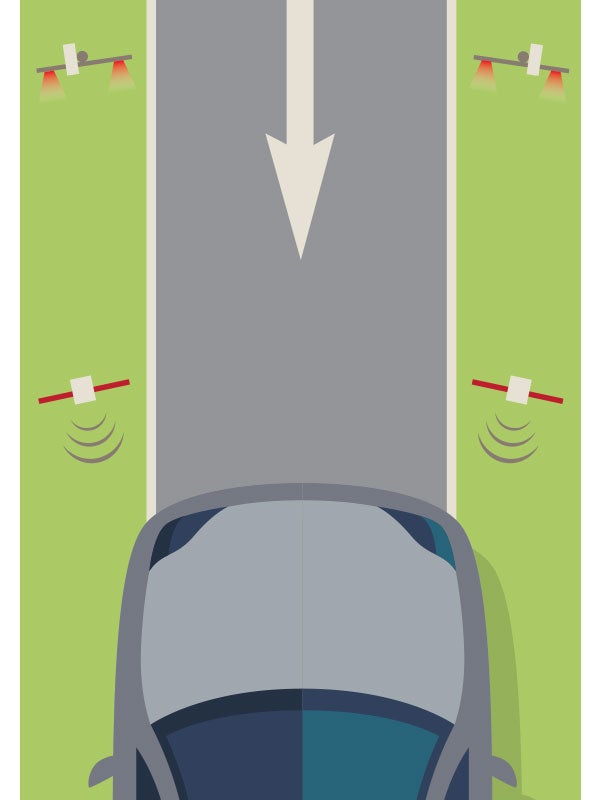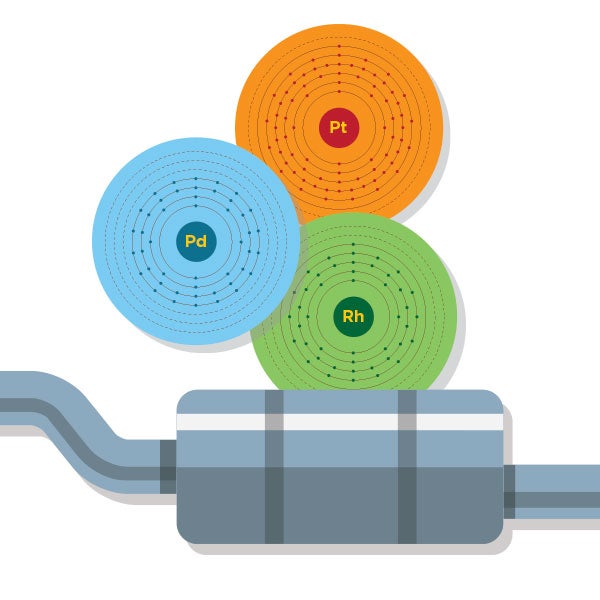
Course Correction
Spring 2021 | By Laura J. Cole
It’s safe to say that driving is an integral part of most of our lives. We drive to work, to get groceries, to take the kids to soccer practice, to travel to new places and to spend time with friends and family.
In fact, prior to the pandemic, Americans spent an average of 11 hours per week in their cars — accounting for 70 billion hours collectively spent behind the wheel during the course of a year. And that’s not taking into consideration the people on the road who are not driving, including ride-share passengers, pedestrians, bicyclists and those using mass transit.
But driving — whether a car, truck or motorcycle — is by far the deadliest form of transportation and among the biggest contributors to air pollution.
While eliminating risks and pollution entirely may not be feasible, UCF researchers are working to reduce both. Projects include leveraging computer vision to assess roadways, bridges and railways and using social media data to better inform transportation decisions.
The breadth and depth of this research is one reason why UCF was ranked No. 5 in the United States and No. 29 in the world for transportation science and technology by ShanghaiRanking’s Global Ranking of Academic Subjects 2020. But the ranking only tells part of the story of the work being done in UCF’s >Department of Civil, Environmental and Construction Engineering.
Here are just a handful of the projects researchers are working on that will have an impact on our lives behind the wheel — and beyond.
Leveraging Big Data to Prevent Accidents
Nearly 20 years ago, Pegasus Professor of Civil Engineering Mohamed Abdel-Aty and his students were talking and a seemingly simple question arose: What if we could use readily available data to predict crashes before they happen?
At the time, Abdel-Aty says, no one was doing this. He and his team started simply enough by using information collected by vehicle detection devices, such as loop detectors, which collect data every 30 seconds. Abdel-Aty and his team used this data to identify patterns in traffic flow and predict where and when accidents were more likely to occur.
As the technology to detect vehicles became more sophisticated, so did the team’s research. Rather than simply predict accidents, they also wanted to prevent them. Convinced they could do more with the data, they proposed projects to and earned funding from the Florida, Colorado and U.S. departments of transportation to research how traffic patterns could be interpreted and put to immediate use. This includes adding more digital speed signs to adjust speed limits in real time and installing ramp meters, which indicate when you’re free to merge onto the highway.
“We have tools that we can use to influence or control what’s happening on the road to reduce abnormal or risky conditions on the freeway,” Abdel-Aty says. “This was extensive research that took multiple projects, many years, and the help of at least eight Ph.D. students to move from proving the concepts to determining specifically what causes different types of crashes.”
Recently, those years of research paid off. The Smart and Safe Transportation (SST) team, led by Abdel-Aty, beat out more than 50 other competitors — including Ford and Uber — to win the U.S. Department of Transportation’s Solving for Safety Visualization Challenge. Their entry builds upon their earlier research by using information such as real-time traffic data and weather as well as history of past accidents and violations to predict the likelihood of an accident occurring. The predictions are shared with transportation operators along with maps of current traffic flow, so they can make faster, more reliable decisions, such as reducing speeds or pushing out updated messages that warn drivers of the perilous conditions ahead.
“Every year in the United States, we have between 30,000 and 40,000 [driving] fatalities and more than 2 million injuries, but we are still using the same rigid methods we were in 2010,” Abdel-Aty says. “The number of fatalities has decreased, but we are still not close to zero, right? Which is unacceptable. We need new data, new technology, new methods and new ways of thinking.”
“We have tools that we can use to influence or control what’s happening on the road to reduce abnormal or risky conditions on the freeway.”Mohamed Abdel-Aty, UCF Pegasus Professor
As the means of collecting information have changed over the years, so have the types of data available to Abdel-Aty and his team at the UCF Smart and Safe Transportation Lab.
We now live in what Abdel-Aty calls a “connected vehicle world,” and the question has evolved slightly: How can we use smart devices to prevent and predict crashes?

“We are interested in several people driving at the same time, being connected and sharing information between vehicles, so that ultimately, we make the traffic better and safer for everyone on — and off — the road,” Abdel-Aty says.
Preventing Crashes from Wrong-way Driving

“Our goal is to achieve zero wrong-way driving deaths,” Al-Deek says.
Since 2012, Al-Deek has worked with the Central Florida Expressway Authority (CFX) to identify wrong-way driving hot spots and develop and implement technology to help put drivers on the right path — whether they’re intentionally trying to avoid tolls, are under the influence, or can’t see clearly as a result of poor lighting, heavy fog or inclement weather.
The simplest solution is to place red wrong-way signs at strategic locations, and the only countermeasure currently approved in the Manual on Uniform Traffic Control Devices, which sets the national standard, is to incorporate red LEDs on those signs.
Al-Deek takes this approach one step further. He developed an alert system in collaboration with CFX that places wrong-way signs on both sides of the road, uses sensors to set off flashing red lights — known as rectangular flash beacons or RFBs — as a driver approaches, and incorporates cameras to capture and immediately dispatch pictures of vehicles to traffic management officials if the driver keeps going.
“We can help the agencies by finding the most dangerous exits. That is UCF’s contribution and methodology: to find hot spots in the region.”Haitham Al-Deek, professor of civil engineering
As of December 2020 on the CFX system alone, the team has documented 756 wrong-way drivers with 649 of them turning around, resulting in an 86% success rate. Not only have the RFBs saved nearly an estimated $20 million in terms of reduced injuries and fatalities, they have also proven to be four times more powerful in getting the attention of wrong-way drivers than the existing LED system. Evaluation results of the FTE system demonstrated a similar success.
“We’re not alone in finding that RFBs are better than LEDs,” Al-Deek says. “FSU and USF evaluated RFBs along with several other technologies — different flashing mechanisms — and they also found the RFBs are better than other technology, so it is the No. 1 choice based on research findings in the state.”
The results are promising but not without challenges. From a financial standpoint, these more robust systems do cost more than just a sign.

“One of the challenges is basically finding where to put these systems because they can be expensive,” Al-Deek says. “We can help the agencies by finding the most dangerous exits. That is UCF’s contribution and methodology: to find hot spots in the region.”
It may not be financially feasible to include this system at every entrance and exit ramp. To help decision-makers get the biggest bang for taxpayers’ bucks, Al-Deek and his team developed an algorithm to help identify not only hot spots but also what they call “lone wolf exits,” which may or may not be near any other hot spots but are dangerous based on collected observations and design characteristics.
They also did a cost-benefit analysis and found that the benefit of using the system far outweighs the cost.
“The benefit-cost ratio is 7.5, so for every dollar you spend, you save $7.50 in return from this investment,” Al-Deek says.
The UCF team is now working to make the RFB system the national standard.
Making Engine Exhaust Cleaner
Assistant Professor of Environmental Engineering Fudong Liu is creating a solution so buyers don’t have to sacrifice the environment to buy a car they can afford.
With nearly 16 years of experience at the Chinese Academy of Sciences, the Lawrence Berkeley National Laboratory, BASF and UCF, Liu has been exploring how to make exhaust from gas and diesel engines much cleaner.
“My long-existing interest has been using my chemical engineering knowledge to solve important environmental problems,” Liu says. “This area is important, and I feel like I have the responsibility to solve this problem, for my personal interest but also for posterity.”
“Electric cars and fuel-cell cars are developing very fast, but I don’t think all of these traditional engines can be replaced by those new technologies within 10 to 20 years.”Fudong Liu, assistant professor of environmental engineering

“We want to use every atom at actual size for the chemical reaction, so our technology is taking the benefit of using the single-atom concept to make sure that we are using the minimum amount of the precious metal — saving a lot of cost — while still ensuring high stability and a robust chemical reaction,” Liu says.
Liu and his team have also developed new technologies that speed up the chemical reactions that occur in converters, helping to remove more than 90% of pollutants from engine exhaust at lower temperatures. For this work, he received the 2020 TechConnect Defense Innovation Award and three patents are pending, including one filed jointly by UCF and BASF. So far, Liu group’s research has been funded by the NSF, U.S. Department of Energy, BASF and the Advancement of Early Career Researchers program at UCF.
When asked why his work is focused on gas and diesel engines rather than electric or solar options, Liu responds, “Electric cars and fuel-cell cars are developing very fast, but I don’t think all of these traditional engines can be replaced by those new technologies within 10 to 20 years. Even if it’s possible for cars, we still have locomotives, power plants and construction machines that require combustion engines. They’re not going away for a while.”